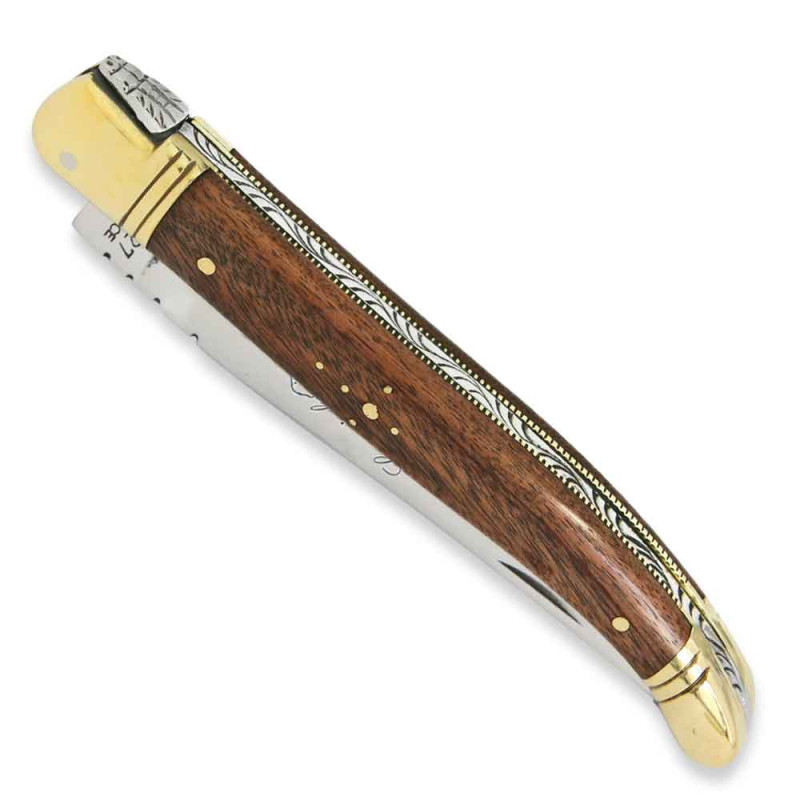Its aspect and colour can vary, going from reddish-browns with blackish streaks to a light violet or to dark nearly black brown. This heavy and dense wood is naturally oily.
Palissander aka Rosewood is a precious wood that is easy to work but requires good know-how due to its relatively high density (850Kg/m3) and its resistance which blunts tools!
Several varieties of rosewood exist, all of the genus Dalbergia.
Indian palissander or Bombay blackwood is found in India and throughout Myanmar, Vietnam, Cambodia, Thailand, Laos and Indonesia.
Sheesham, Indian rosewood is a species used in marquetry. It is also used as fuel wood and its shoots are used as tooth brushes. It originated from the Punjab and is the state and provincial tree of Punjab in India and Pakistan respectively.
The most mythical, Bahia rosewood or obuina is CITES listed (Washington Convention) and on the IUCN Red List. It only grows in damp forests of Southeastern Brazil.
The smell of Brazilian Bahia rosewood is incomparable. Its fragrance has characteristic soft flowery notes reminiscent of roses.
It has also been a favoured wood amongst makers of musical instruments for centuries. It is used to make pianos and stringed instruments such as guitars and violins to which it gives a unique sonority.
Madagascar rosewood, unique to the island of Madagascar, has violet to red or even blackish veins. Illegal logging and over-exploitation mean it is is endangered too.
Brazilian ironwood is sometimes compared to rosewoods due to its brown to red or even yellow veins.







